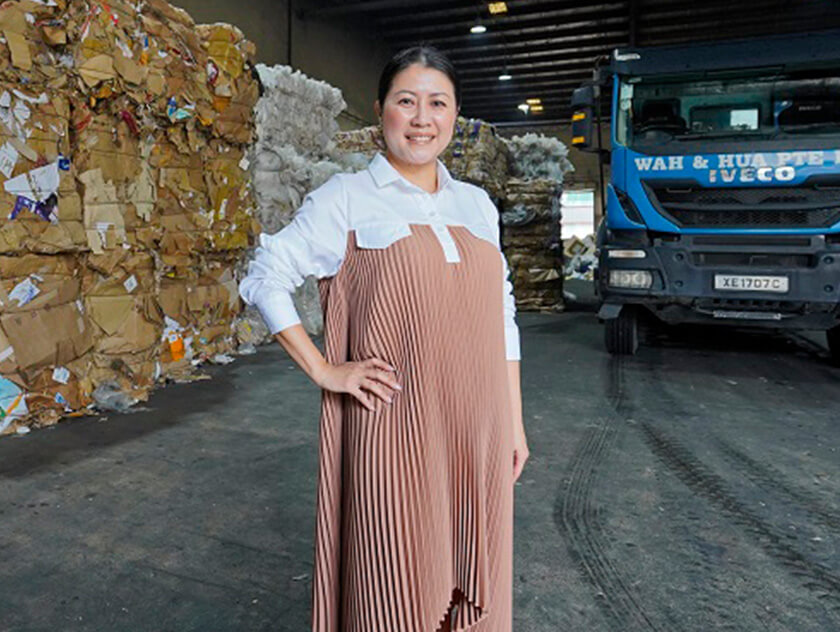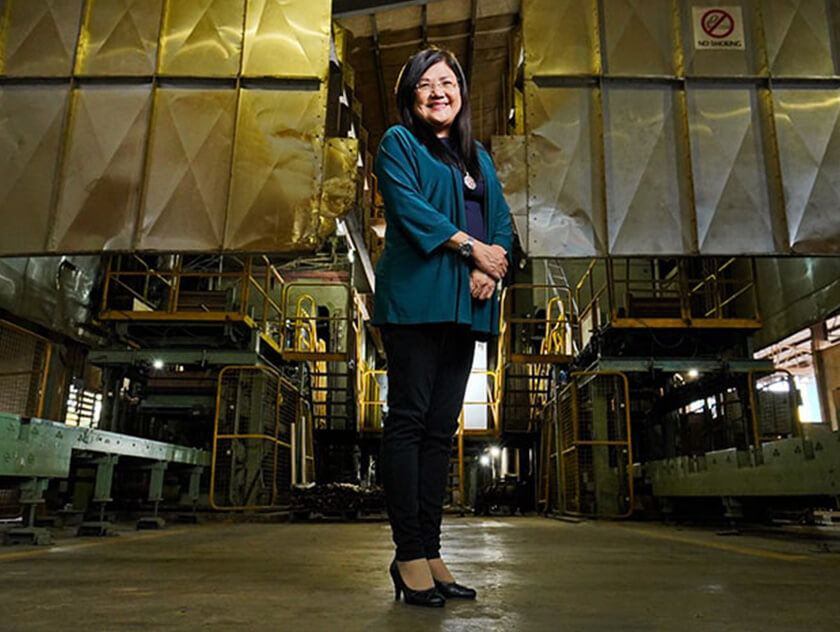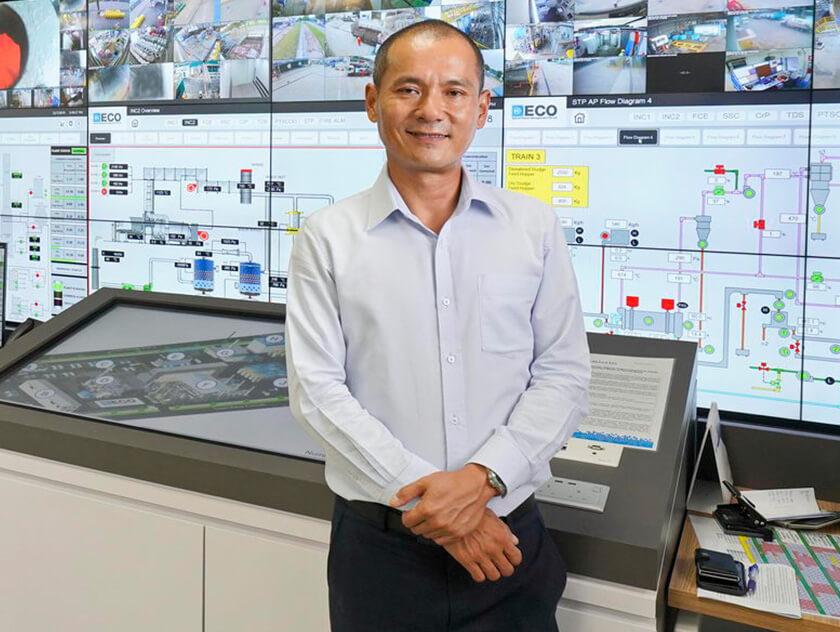From a one-man karang guni operation into one of the key players in the waste management industry, Wah & Hua has changed drastically across four decades in Sungei Kadut. It now boasts its own fleet of trucks and a high-tech recycling factory, where waste is automatically sorted and processed.
The company is now gearing up for its next stage of growth, alongside plans for Sungei Kadut to transform into an eco-district for innovation, sustainability and collaboration.
It is one of several Sungei Kadut waste management companies that will move from land-based facilities to the district’s upcoming multi-storey recycling facility, Kranji Green. General Manager Melissa Tan sees the high-rise facility as a hub for collaboration and innovation, especially in resource recovery, where certain materials are separated from waste to be reused as or turned into raw materials.
“Kranji Green will be a common depot where waste management businesses can complement each other and share resources. We can use technology to sort waste into metal, plastics, paper and glass... What’s left, we can still use to generate energy.”
Wah & Hua, a member-company of the Waste Management and Recycling Association of Singapore (WMRAS), has plans in place for a power station in Tuas, where waste that cannot be recycled will be incinerated to produce electricity.
The company’s current facility in Kranji leverages technology to automate tasks such as sorting of waste, saving costs and boosting productivity in the long run. “We need fewer man-hours on the ground, and our workers get more time for tea-breaks. They are happier. We are also working on using more technology to further reduce the load on our workers when they check the sorting process.”
The biggest obstacle to introducing new technology is often changing people’s mindsets, shares Ms Tan. “We always make sure to tell them the machines are not to replace them – they are here to make their job easier. They are worried they will lose their jobs, but it is not like that at all.”
This trend of digitalising the waste management industry ties in with the government’s Environmental Services Industry Transformation Map, which encourages businesses to adopt technology and upskill the workforce in order to improve productivity and create high-value jobs. For example, through the Internet of Things, waste disposal trucks can take optimised routes for better efficiency – and workers are trained in the new technology.
Beyond leading changes in Wah & Hua, Ms Tan also contributes to industry-wide transformation efforts as the chairman of WMRAS. Members have regular meetings to discuss how they can help each other, and to share best practices they have learned.
The association has also played a key role in Kranji Green’s development, by co-conceptualising the development with JTC based on the industry’s needs. For example, right from the early stages of planning, WMRAS members have been sharing their thoughts on the practicality of the building’s design and layout for their businesses. Even today, members continue to make suggestions on how to improve the transport connectivity of Kranji Green for their workers and to enhance its work environment by providing more amenities such as an in-house café.
To further encourage sustainability at Sungei Kadut Eco-District, Ms Tan has an unconventional idea – to reduce the number of bins in public areas. She thinks this will get people to become more conscious of the waste they generate and take responsibility for the disposal. For example, workers in the estate who buy a bottled drink during lunch will need to bring the bottle back to their own companies for recycling, instead of just getting rid of it in public bins.
This could be one way to encourage the community in Sungei Kadut to recycle more and chip in for the environment, she emphasises. “People have to be willing to make a conscious effort to love our environment and protect it. We’re getting there, but more progress is possible.”
Ms Tan is also hopeful that the plans to rejuvenate Sungei Kadut’s infrastructure and improve accessibility – such as by adding an MRT station right in the heart of the estate – would help companies like Wah & Hua to attract talent.
“I think the redevelopment will attract the younger generation with a new image and impression,” she shares. She also thinks grouping waste management companies into the high-rise Kranji Green would “upskill the image of the waste management sector and help us recruit more employees.”
However, even as Sungei Kadut continues to evolve, Ms Tan hopes that its rich history, especially for the waste management and timber industries, will live on.
“This is one of our oldest industrial estates. I fully support the rebuilding…but I think it should not lose its beauty and character. It is home to our heavy industries, the unsung heroes of Singapore.”


